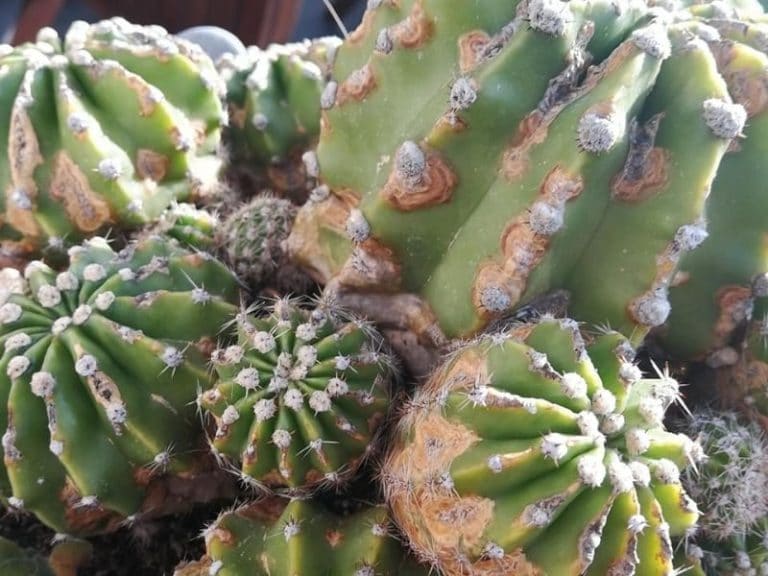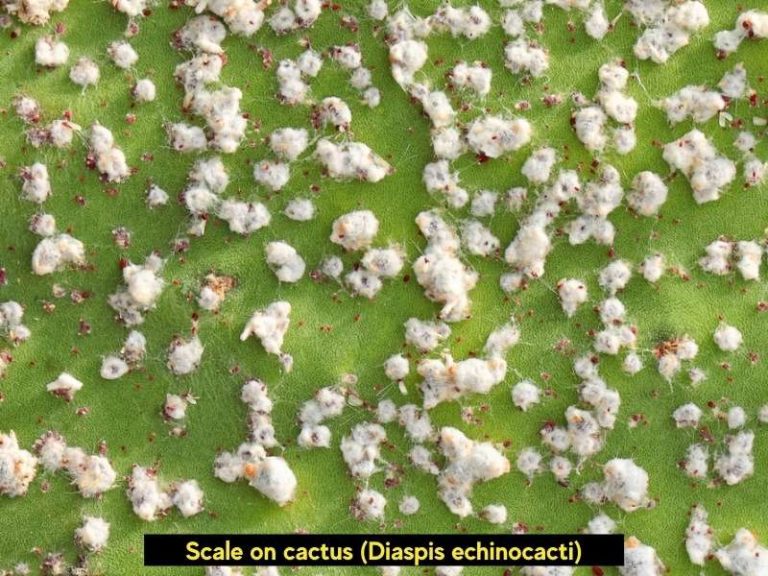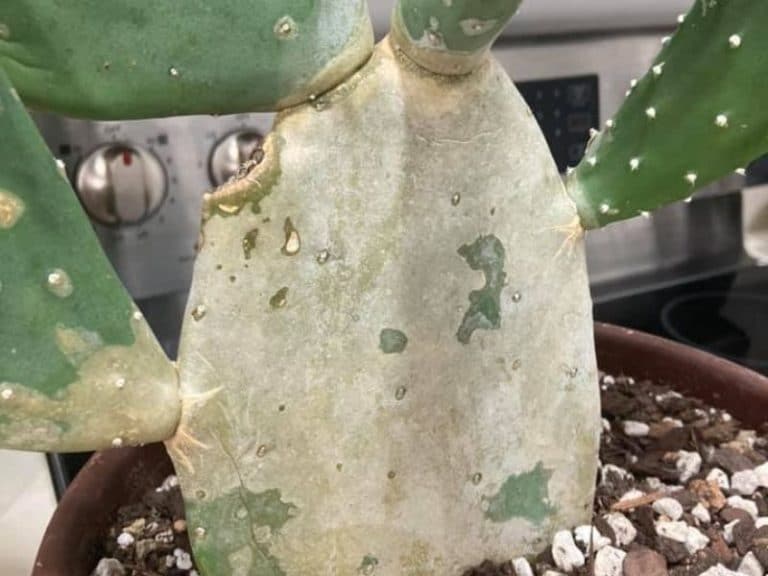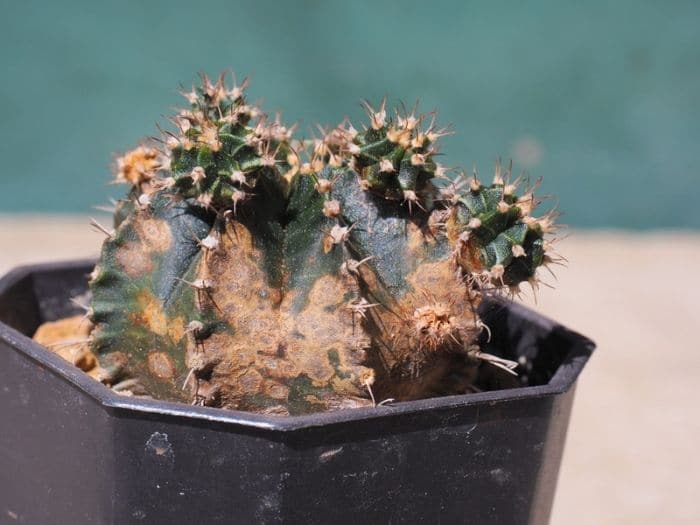What’s the White Fuzz on Cactus?
Cacti are hardy succulents but are not immune to pests and diseases. If you’re new to growing these succulents, you may notice some white fuzz spots at some point, and it is important to determine if they’re normal or not. Sometimes, the white fuzz can signify something that needs urgent attention to save the plant.
The main reasons for the white fuzz on cacti are mealybugs and fungus. Mealybugs are small, white insects that are difficult to see but often leave a white cottony residue on the succulent. Mix one part rubbing alcohol with three parts water in a spray bottle and spray the infested cacti to eliminate the white stuff.
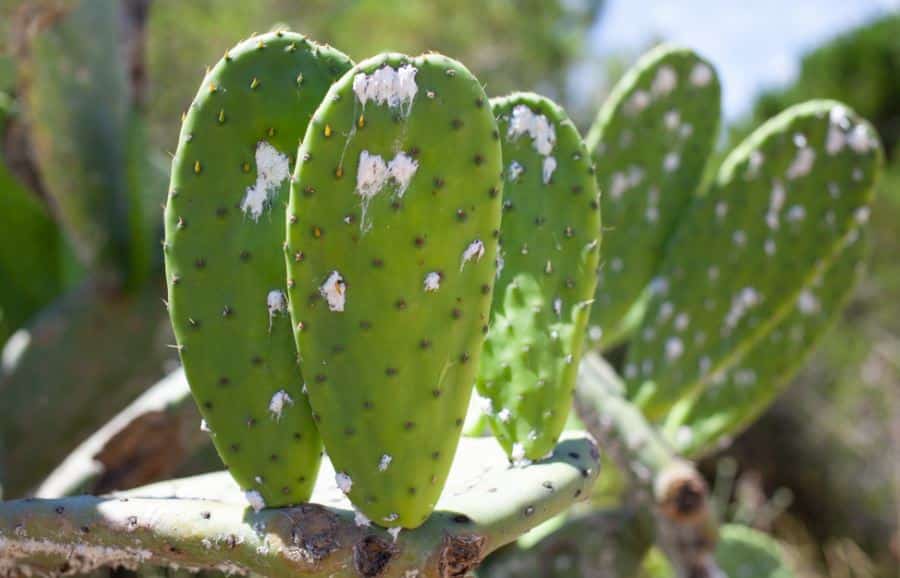
Author note: The white stuff isn’t always a pest infestation. As I’ve explained below, some cactus varieties form white, wooly structures just before flowering. Fungi can also grow on these succulents and appear as white stuff.
What is the white fuzz on cactus?
Closely examining the white substance on cacti may not reveal what it is. Some succulents, like the San Pedro cactus and the Old Man’s Beard Cactus, are known to have white, hairy-like structures at some point in their lifespan.
It is important not to assume any white fuzzy spots on your cacti are pests and diseases. Here are the possible causes of the white stuff and what to do about them.
1. Mealybugs (cochineal bugs)
Mealybugs are very small, soft-bodied insects about 1/20 to 1/5 inch in size, making them very difficult to see with your eyes.[1] They are elongated and segmented, with waxy filaments protruding from their posterior end. Mealybugs are covered with white or grey cottony wax, which is why they form a white fuzz on the plants they attack.
The most common reason for white fuzz on cactus is a mealybug infestation. These bugs gather and group together as their population grows, and since they have cotton-like wax surrounding their bodies, their clumping together appears like white fuzz.
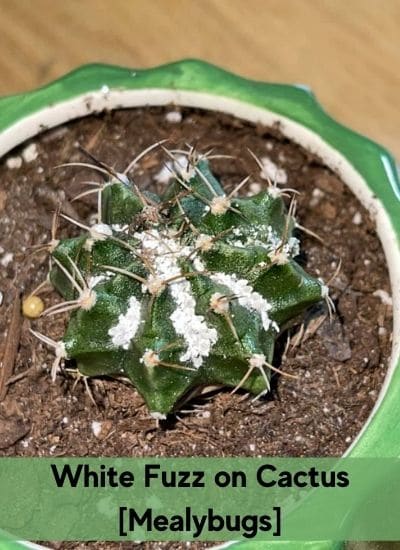
Further signs include:
- White cottony substance on or near new growth.
- Sooty mold or sticky honeydew on infested plants. As mealybugs feed, they excrete a sticky substance called honeydew on the cactus plants. This excrement attracts fungal infestation in the form of mold spores. The black-colored sooty mold covers the infested cacti and diminishes their aesthetic appeal while undermining photosynthesis by blocking sunlight.
- Stunted growth – As they suck moisture and nutrients from your cactus plant tissue, your cacti become weak, leading to color loss and stunted growth and development.
- Wilting.
Adult mealybug females lay eggs and produce an ovisac to cover them. To the naked human eye, the combination of the cotton-like ovisac and mealy wax secretion looks like tiny cotton spots.
To confirm that the white fuzz is indeed mealybugs and not other plant pests like aphids, take a closer look at the plants using a magnifying lens. There are over 275 mealybug species in continental America alone,[2] but all share some common characteristics:
- An oval body shape
- Tiny size, measuring between 0.05 to 0.5 inches.
- Mealybugs can be pink or grey.
How to control mealybugs on cactus
Mealybugs can weaken and even kill a cactus if left uncontrolled. The first thing you want to do is isolate the infested plant to prevent the spread of mealybugs to healthy plants.
Here’s how to get rid of mealybugs on cactus:
Rubbing alcohol
Rubbing alcohol (Isopropyl alcohol) is an effective pesticide for controlling aphids and mealybugs on plants. The pure alcohol dissolves the cells of the insects on contact killing the insects fast.
Here’s how to use rubbing alcohol for the white fuzz on cactus:
- Mix water and rubbing alcohol in a ratio of 1:3 in a spray bottle.
- Spray the affected cacti with the rubbing alcohol solution.
- Use a cotton swab to dislodge any mealybugs sticking to the plant.
- Repeat the process every few days until all of the mealybugs are gone.
Author note: Always test rubbing alcohol on a small part of your cactus to determine if it is safe for them. I’ve seen cases of burnt foliage due to the direct application of isopropyl alcohol.
Alternative ways to control mealybugs are to introduce a predatory mealybug species (Cryptolaemus montrouzieri) to feed on the mealybugs or to treat them with insecticidal soap.
Mix 2-4 tablespoons of neem oil concentrate with one gallon of water in a spray bottle. Apply the oil to the infested plant to kill the mealybugs and get rid of all the white fuzz on your cactus.
Remember to do a patch test first to prevent your plant’s leaves from burning.
2. Powdery mildew (Fungus)
Another possible cause of white fuzz on cactus is a fungal infection called powdery mildew. It is characterized by a white, powdery growth on the leaves and stems of the succulent, typically in warm, dry climates.
Powdery mildew starts as a few spores on the leaves and pads of the succulent and quickly spreads, almost covering the entire foliage of the plant. Sometimes, the white fuzz appears splotchy and can manifest in patches.
There are various types of powdery mildew fungi, but they all have similar symptoms. White or grayish talcum-powder-like growth on the foliage and stems of succulents is quickly identifiable as white fuzz or white mold.
If you suspect your cactus has powdery mildew, check if it is growing in an environment with poor circulation and damp and shaded conditions.
Author note: Powdery mildew does not grow on wet leaves as most people would think. While the probability of its occurrence increases with an increase in relative humidity towards 90%,[3] leaf wetness discourages the fungi. Therefore, overhead watering does not directly cause white fuzz on the leaves of cacti plants but increases relative humidity around the plant.
Overwatering cacti, lack of sunlight, and poor drainage point to poor plant care practices that encourage fungal infections. If not treated on time, the white fuzz can spread and cause the succulent to rot and eventually die.
Treatment for powdery mildew
Cultural practices such as cutting off infected leaves, pruning, and avoiding overhead watering are great for controlling the white fuzz on succulents. However, if the disease is widespread, the most effective solution is chemical treatment.
Apply a fungicide to control powdery mildew on your plants. Some effective fungicides include:
- Sulfur
- Potassium bicarbonate solutions
- Neem oil
- Triforine such as Ortho Funginex
I recommend combining cultural and chemical treatments for a much more effective outcome in fungal white fuzz on your cactus.
Remember to follow the instructions on the product’s label.
3. Cephalium
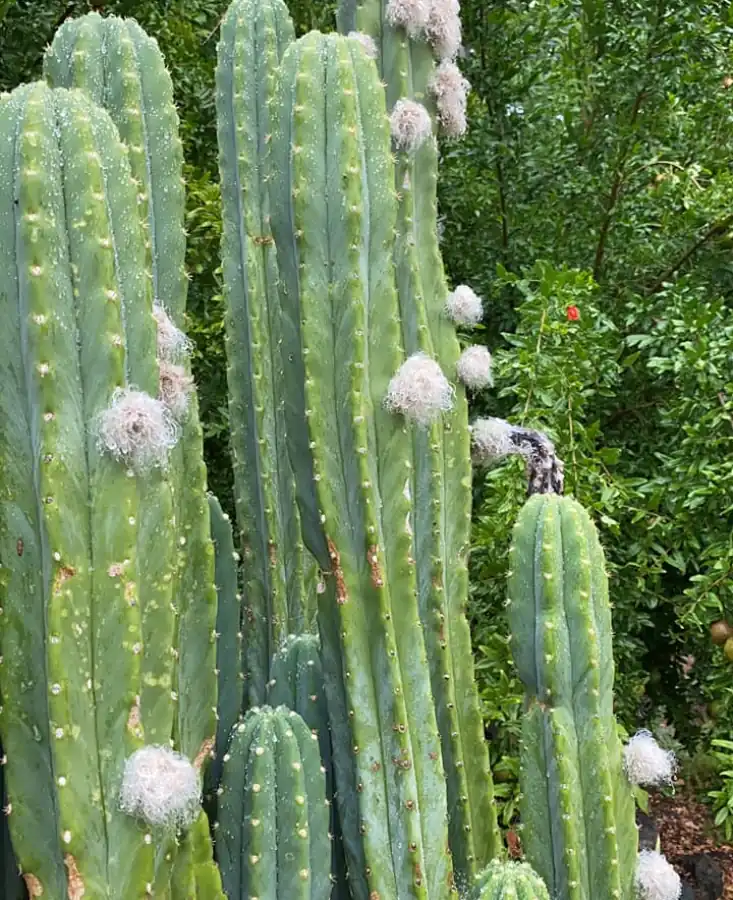
The white fuzz in some cacti of the genus Melocactus is a normal structure that precedes flowering. According to Wikipedia, cephallium is “a specialized growth that forms on cactus after it has reached maturity. It is usually woolly and is the generative point for flowers.” [4]
Some studies (Mauseth 2006) point out that cephalia are the reproductive parts of mature cacti that manifest a distinct juvenile-to-adult morphological transition. In such a case, the white stuff you may see on your cactus is likely to be a normal structure that precedes its blooms.
However, this occurrence is common in mature cacti only.
Prevention
Keeping your cactus healthy is a great way to ensure it does not get the unsightly white stuff on its foliage. Proper care in terms of watering, pruning, and feeding will ensure the plants thrive well without such problems.
Here’s how to prevent the white fuzz on your cacti:
Avoid overwatering
When you overwater your cacti, the succulent paddles hold excess water, making them more attractive to pests like mealybugs. The recommended irrigation frequency for most species of cacti is once per week or when the soil dries out.
Here’s a guide on how often you should water your cactus plants.
Clean up the environment
Note that apart from perching onto the paddles and buds of your cactus [plants, mealybugs also like to lurk in the surrounding environment. For instance, they may be hiding in the pots in which the cacti are planted, or even inside the mulch in your garden. What’s more, mealybug eggs may also be present in the soil.
Therefore, to prevent re-infestation after eradicating mealybugs, clean up the pots and repot with a succulent-ready soil mix that hasn’t gone bad.
For cacti growing outdoors, remove the old mulching and replace it with new mulch. Finally, you can kill mealybug eggs present in the soil by baking the soil in an oven at high temperatures.
Improve air circulation
Fungi thrive in moist, humid environments. Improving airflow around plants helps reduce the humidity and makes it more difficult for fungi to grow. This can help prevent the development of white fuzz, a common symptom of fungal infection.
Here’s how you can improve circulation around plants:
- Prune overgrown plants near cacti.
- Using a fan in a stuffy room with plants to improve air circulation.
- Spacing out plants in their nursery.
Conclusion
The main reasons for white fuzz on cacti plants are mealybugs and powdery mildew. However, in some types of cactus, white fibers emerge at the flowering points in mature succulents, so ensure you identify the underlying problem correctly before applying a treatment.
Mealybug control using rubbing alcohol should be enough to deal with pest infestation, while a fungicide can help treat fungal infections that cause powdery mildew in plants.


